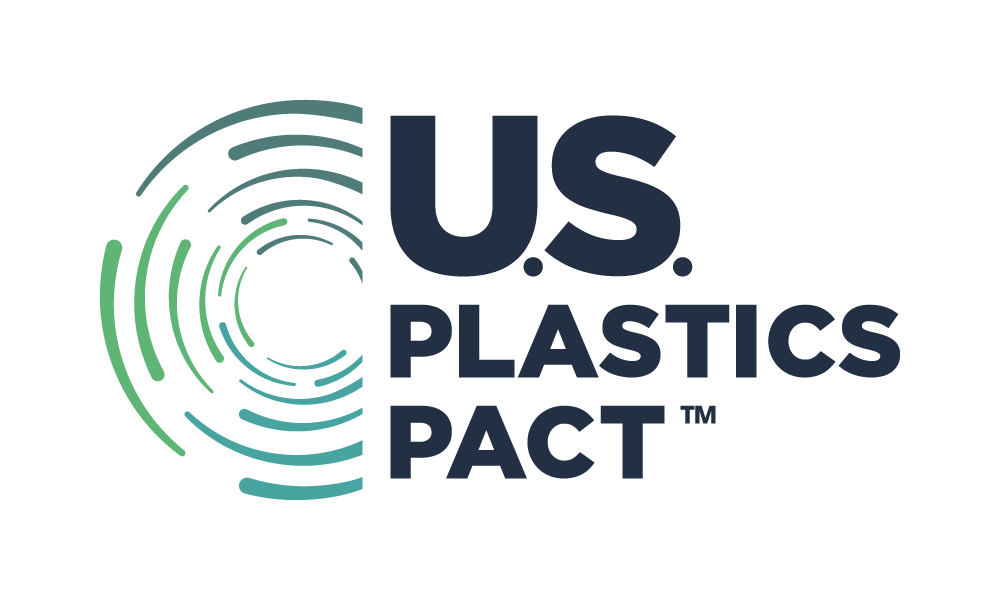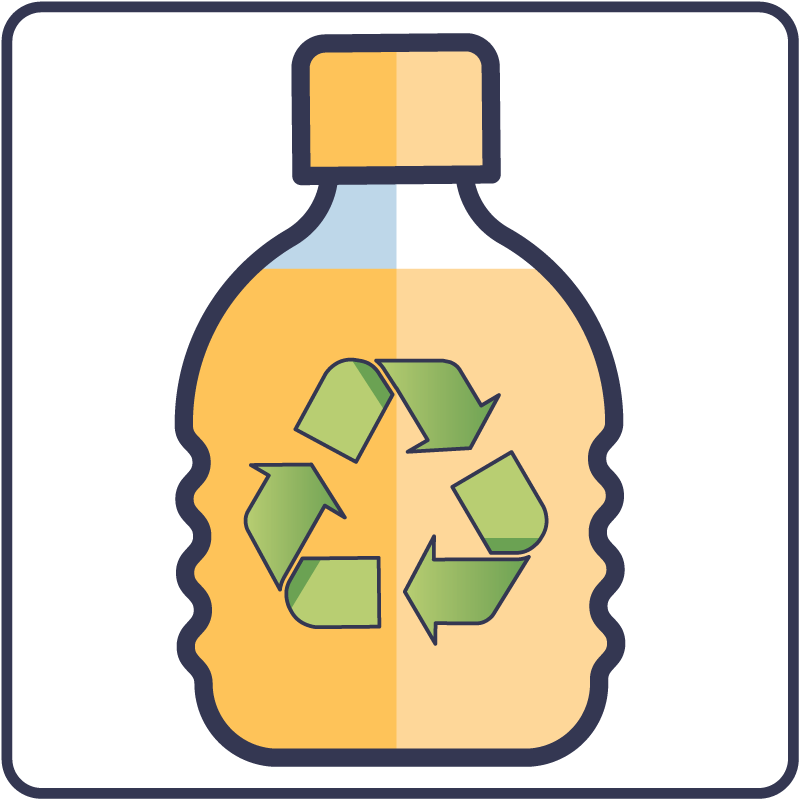Quality Assurance (QA) Considerations for Mechanically Recycled PCR
PCR Quality for incoming recycled content resin or flake sent to converter making packaging material
- Review PCR Resin grade for intended use
- FDA documentation, resin/flake properties, and historical material quality will help brands and converters identify the appropriate PCR for a particular application.
- A Certificate of Analysis (COA) can help to measure characteristics that are critical to end user of the material
- Please see the “QA Considerations” link below for a list of quality attributes to considering including in your testing protocol
PCR Quality for finished packaging materials that contain PCR, material sent from convertor to end user of the material
- A Certificate of Analysis (COA) can help to measure characteristics that are critical to end user of the material
- Please see the “QA Considerations” link below for a list of quality attributes to considering including in your testing protocol
- Consideration on recycled content type and end use
- Volatile Organic Compounds (VOC) analysis could be used to identify substances and review for malodors
- L*a*b values (the Hunter scale to measure color) for hue could be used to review color of resin or end product – learn more here
- Ensure Organoleptic evaluations completed if needed based on intended use
- Recycled content is an intentional impurity and materials could appear off-color or have black specs
Back to top
Using PCR in Food Grade Applications
Plastic is used for packaging of almost every type of product from food and drinks to cleaning supplies and durable goods. In order to ensure that recycled plastic used in food contact applications is safe for consumers, the U.S. Food and Drug Administration (FDA) has a means for reviewing recycling processes used by recycled resin producers. The FDA evaluates the processes, test results and the proposed conditions for the use of the plastic to ensure that any contaminant concentrations do not migrate from plastic into food and result in dietary concentrations that exceed a negligible threshold (less than 0.5 parts per billion).
The packaging is approved for the type of food, the duration of contact and the range of temperature applications from freezing up through high oven temperatures. It is important to note that a favorable determination for a given condition does not mean the package is suitable for other applications.
The FDA issues favorable opinions through No Objection Letters (NOL) which are also commonly referred to as LNO’s within the industry. As of September of 2022, there were 271 NOL’s listed in the FDA’s searchable database. While the vast majority of those listed are for PET, there are multiple listings for other resins including HDPE, LDPE, and PP. Food grade recycled resins are most commonly available for PET (rPET), but natural HDPE and others are increasing in availability.
Suppliers are also developing solutions that use various manufacturing techniques to embed recycled materials between layers of virgin materials. These layering techniques can be implemented for both rigid and flexible packaging solutions. The FDA has established “an effective barrier” thickness for PET at different conditions and offers guidance for studies with other resins. Advanced recycling technologies (also referred to as chemical recycling) produce resins that are comparable to virgin resins and, thus, suitable for food contact. Many of these technologies can also tolerate high levels of food residue.
References:
- Searchable list of No Objection Letters
- Guidance for Industry: Use of Recycled Plastics in Food Packaging (Chemistry Considerations)
- Food Types & Conditions of Use for Food Contact Substances
Back to top
Converter Preparation
Choose a converter that is ready and able to integrate PCR by focusing on:
- Available capacity – potentially requires changeovers along with running at a reduced rate
- Infrastructure to bring in material – this can drive additional cost
- Previous experience with PCR – ensures the converter has sufficient knowledge of PCR needs
- Technical expertise – to problem solve development issues
- Understands the value of PCR and has a willingness to think outside of the box
Back to top
Percent Targets
Integrating 25% PCR into non-film applications like bottles and rigid plastics is generally considered the norm. The converter will typically do a trial run with PCR to see which, if any, processing changes are needed for the integration of PCR. During that trial, it is recommended to test different percentages: 25%, 50%, 75%, up to 100%. While you may only use 25% at the time of launch, you will know to what level you are able to integrate PCR into your package, how the different levels affect the appearance, and any processing changes that are required. This will be valuable information in the future as the PCR supply becomes more abundant.
For film, 10% is an achievable target but testing up to 40% is a worthwhile endeavor.
Back to top
On-Pack Labeling
Before any claim of recycled content is made on-package, consult the Federal Trade Commission (FTC) Green Guides to ensure compliance.
A growing number of American consumers are looking to buy environmentally friendly “green” products from recycled paper to biodegradable trash bags. Companies have responded with “green” marketing touting the environmental benefits of what they’re selling. But sometimes what companies think their green claims mean and what consumers really understand are two different things. The Federal Trade Commission’s Green Guides are designed to help marketers avoid making environmental claims that mislead consumers under Section 5 of the FTC Act. States may have different requirements in addition to the federal Green Guide recommendations.
The Green Guides were first issued in 1992 and were revised in 1996, 1998, and 2012.
The guidance they provide includes:
- general principles that apply to all environmental marketing claims;
- how consumers are likely to interpret particular claims and how marketers can substantiate these claims; and
- how marketers can qualify their claims to avoid deceiving consumers.
The Federal Trade Commission sought public comments in 2023 for potential updates and changes to the Green Guides for the Use of Environmental Claims. The Commission seeks to update the guides based on increasing consumer interest in buying environmentally friendly products. The U.S. Pact submitted comments during the open comment period and looks forward to the release of the updated Green Guides.
Back to top
U.S. Pact's PCR Commitment Statement
The U.S. Pact has voluntary PCR usage requirements for all its Activators based on their place in the plastics value chain, with the goal of creating momentum to reach Target 4 of the U.S. Plastics Pact Roadmap of an average of 30% (by weight) postconsumer recycled content in plastic packaging sold within the United States by 2025. The U.S. Pact expects that Activators who already have a publicly stated general recycled content commitment specifically call out PCR commitments instead of or in addition to using the term “recycled content.” For U.S. Pact Activators who produce and distribute plastic packaging, such as consumer product goods companies (CPGs), retailers, and converters, we expect each to publicly state a commitment to a quantifiable target of PCR that is incorporated into their plastic packaging by 2025. For Activators that are non-plastic packaging producers, such as government entities, nonprofit organizations, and recyclers, we expect that each Activator publish external statements on quantifiable internal PCR procurement. PCR internal procurement includes, but is not limited to, office supplies, trash bags, pallets or bins/totes, and trash and recycling bins. The U.S. Pact also encourages non-packaging Activators to have a public statement supporting the use of PCR to address PCR markets on a larger scale, closing this loop of the circular economy.
PIR Statement
PIR is Out of Scope for U.S. Pact Measurement
Post-industrial recycled (PIR) materials divert waste from the landfill and reduce the need for virgin plastic. The U.S. Pact, as a standard operating procedure, recommends that Activators utilize PIR in their products and procurements. The ISO definition for PIR is, “pre-consumer…a material diverted from the waste stream during a manufacturing process. Excluded is reutilization of materials such as rework, regrind or scrap generated in a process and capable of being reclaimed with the same process that generated it.” However, the U.S. Pact does not allow PIR commitments or use to replace PCR commitments as part of the U.S. Pact’s four targets. The U.S. Pact recognizes that there is more work to be done to create markets for PCR than there is for PIR, and as such PCR commitments are the priority.
Examples of Postconsumer & Post-Industrial Materials
Below are examples of PCR and PIR. PIR is out of scope for the U.S. Pact. The differences between PIR and PCR are nuanced, and it is important to identify real-world applications of both.
Postconsumer materials based on the ISO definition:
- A consumer purchases a bottle of soda, drinks it, and places it in a recycling bin.
- A pallet of laundry detergent ships from the producer to the retailer. The retailer discovers that a bottle has leaked laundry detergent all over the rest of the bottles. The bottles are emptied and sent to a recycler.
- Stretch wrap is used to transport a pallet from the producer to a retailer. The retailer cuts off the stretch wrap and sends it to a recycler.
Post-industrial materials based on the ISO definition:
- A mask manufacturer purchases roll stock and trims it into individual masks. The trimmings are sent to a recycler.
- 4 truckloads of jars arrive at a manufacturing facility and are warped and unusable. They are sent to a recycling facility.
Disclaimer
The U.S. Plastic Pact created this toolkit to assist U.S. Pact Activators in voluntarily purchasing postconsumer resin for their products and packaging. This toolkit does not contain any endorsements, recommendations, legal or financial advice, and should not be construed as such. The U.S. Pact and contributing authors are not liable for any business decisions that result from consulting this toolkit.








